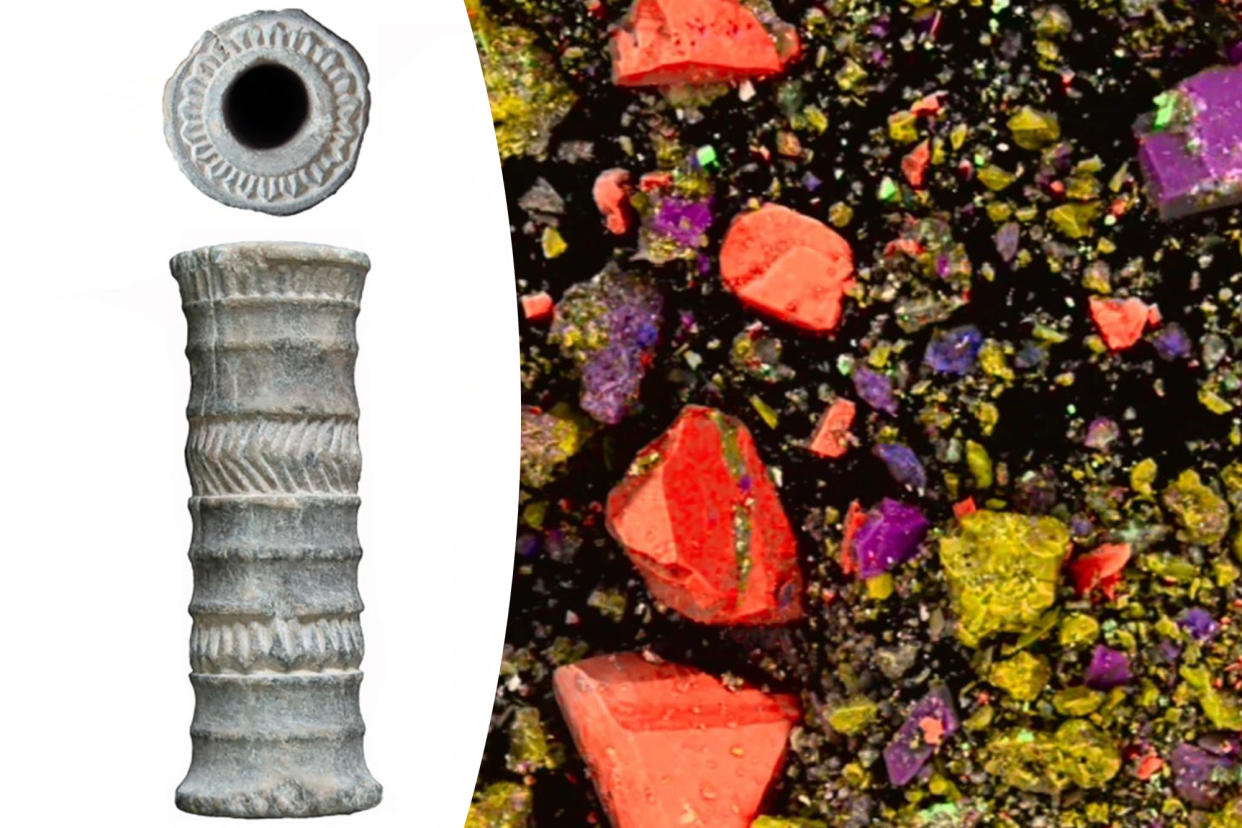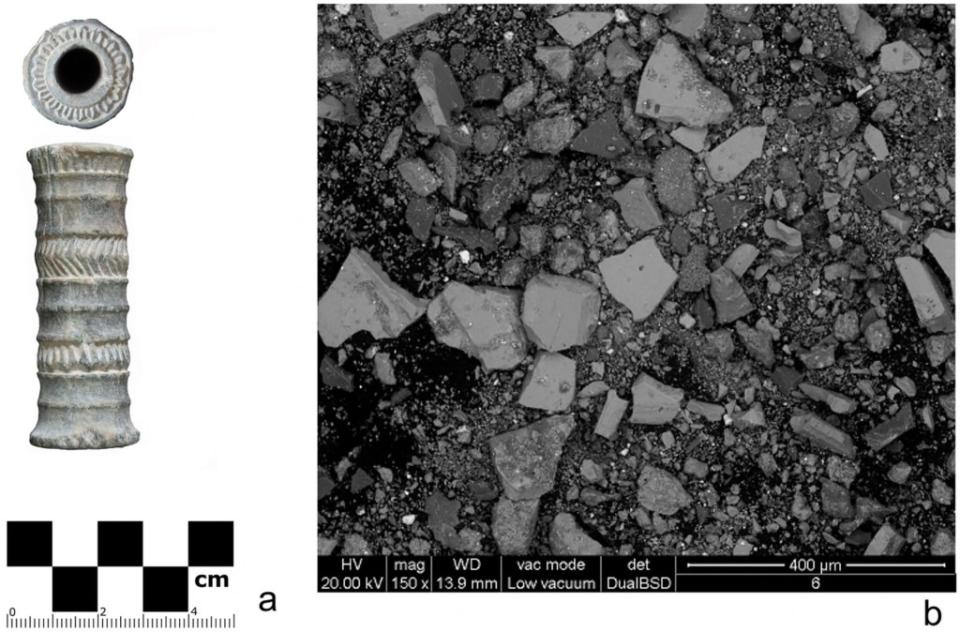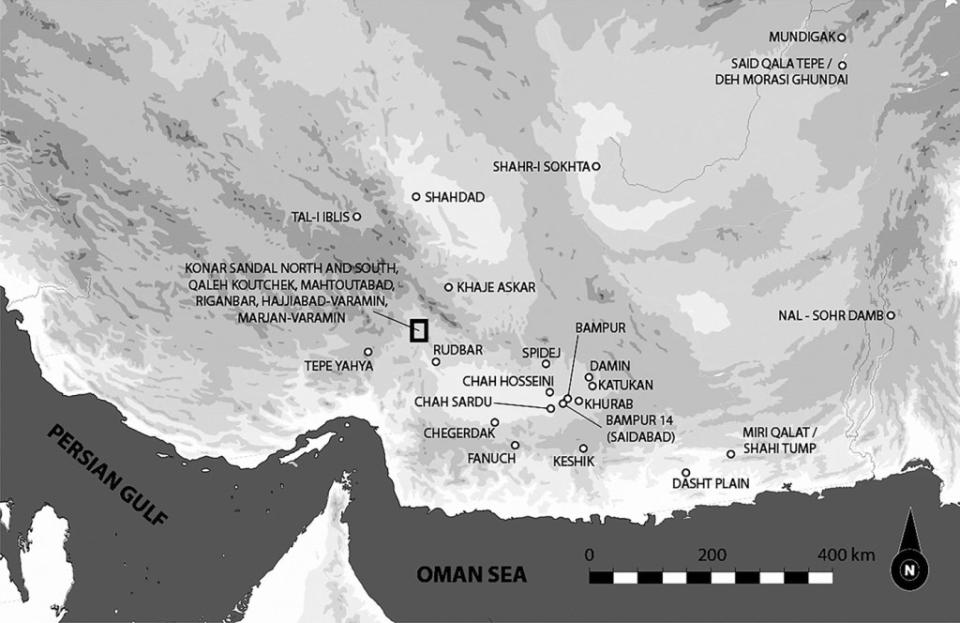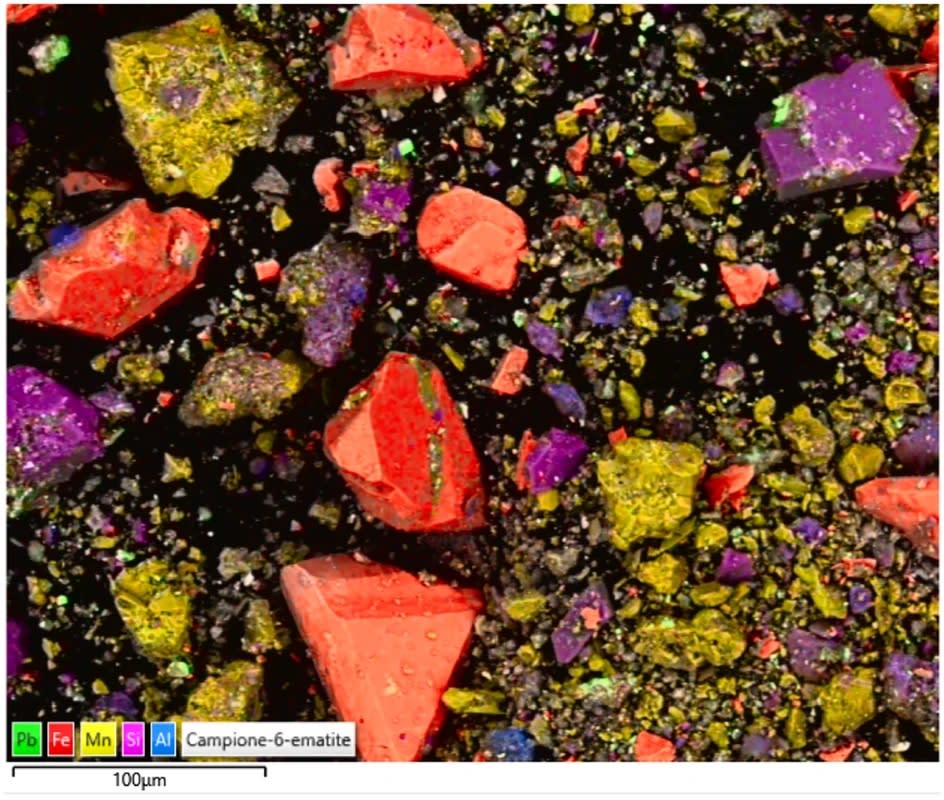World’s oldest lipstick found — in a country that once banned makeup

Such timeless beauty.
Archaeologists have discovered the world’s oldest physical form of lipstick in southeastern Iran.
The hand-carved stone vial, carbon-dated between 1936 B.C. and 1687 B.C., is made of the mineral chlorite, includes a hole on the top for extracting the contents and is the Bronze Age form of lip-wear that was probably applied with a brush.

Researchers analyzed the deep-red beauty product last month and published their findings in Scientific Reports.
“It is important to note that in the present state of knowledge, we hypothesize a lip-paint, rather than a solid lipstick,” Massimo Vidale, one of seven scientists who studied the substance, elaborated on the finding in a statement.
The ancient beauty product, measuring around 2 inches tall by three-quarters of an inch wide, resembles a smaller version of the traditional cylindrical lipstick container.
“Because of its shape, mimicking a segment of a marsh cane, it is very thin and easy to handle,” Vidale told The Washington Post. “At the time, people used common cane segments as cases or receptacles, but this one is made of a prestigious stone.”
Scientists mentioned the cylinder was initially discovered in 2001 from a third-millennium B.C. graveyard flooding near the Halil River in the Kerman province, in southeastern Iran.

The vial believed to have been used by the Jiroft culture, a Bronze Age civilization, was unknown until the flooding occurred.
“It is always a sudden revelation,” said Vidale, a professor of archaeology at the University of Padua in Italy. “Even more, because the substance under our eyes matched perfectly with the very unusual form of the fine stone container, so close to the lipstick cases of our days.”
Vidale’s team examined the material inside the ancient chlorite-schist vial, revealing the lip paint was in powder form due to more than 3,700 years of dehydration.
When placed under a microscope, researchers noticed the dark pigments were visible, indicating the original product was an “intense red color,” the team reported.
They increased their investigation into the product by inspecting the lipstick’s composition using an environmental scanning electron microscope.

The tube included products similar to today’s cosmetic lipwear, such as vegetable oil and wax.
“Combined together, this is exactly what one would expect in a modern lipstick,” Vidale emailed to The Washington Post.
However, components like hematite — a ferric oxide mineral whose name is derived from the Greek word for “blood” because of its red color — were present, too.
Although lipstick has been around for at least 5,500 years, researchers were surprised to locate the world’s oldest lipstick known in Iran — a country that once banned makeup and cosmetics.
The country eliminated beauty products after the 1979 Islamic Revolution but eventually relaxed its restrictions, allowing only women who do not work in government and medical students to wear makeup.

While Vidale’s team was fascinated with the discovery of the oldest lipstick, they were unsure who it belonged to, but they assumed it was a part of the Jiroft funeral rituals buried in the grave.
“We are groping in the dark here,” he wrote. “We can assume that the dead were adorned for their final journey, but also that cosmetics were important personal possessions of daily use, and that, upon an individual’s death, they could not be used by others.”
Vidale noted that although thousands of years have passed since B.C., there are many similarities between today’s society and ancient times.
“The evidence supports a simple point: the world of the early Bronze Age, when the first cities became the political hubs of powerful and hierarchic states, was already very, very similar to our one,” he concluded.

